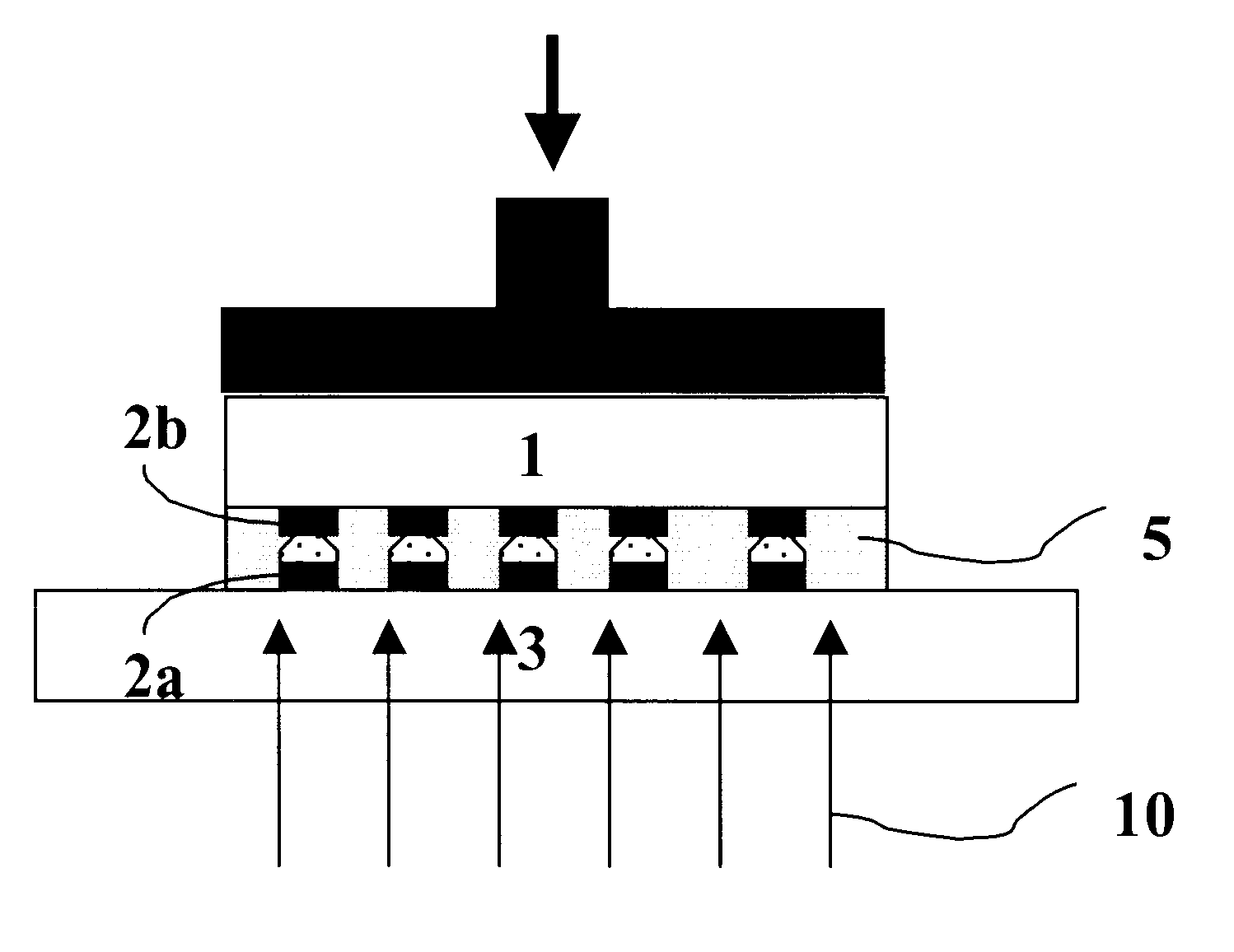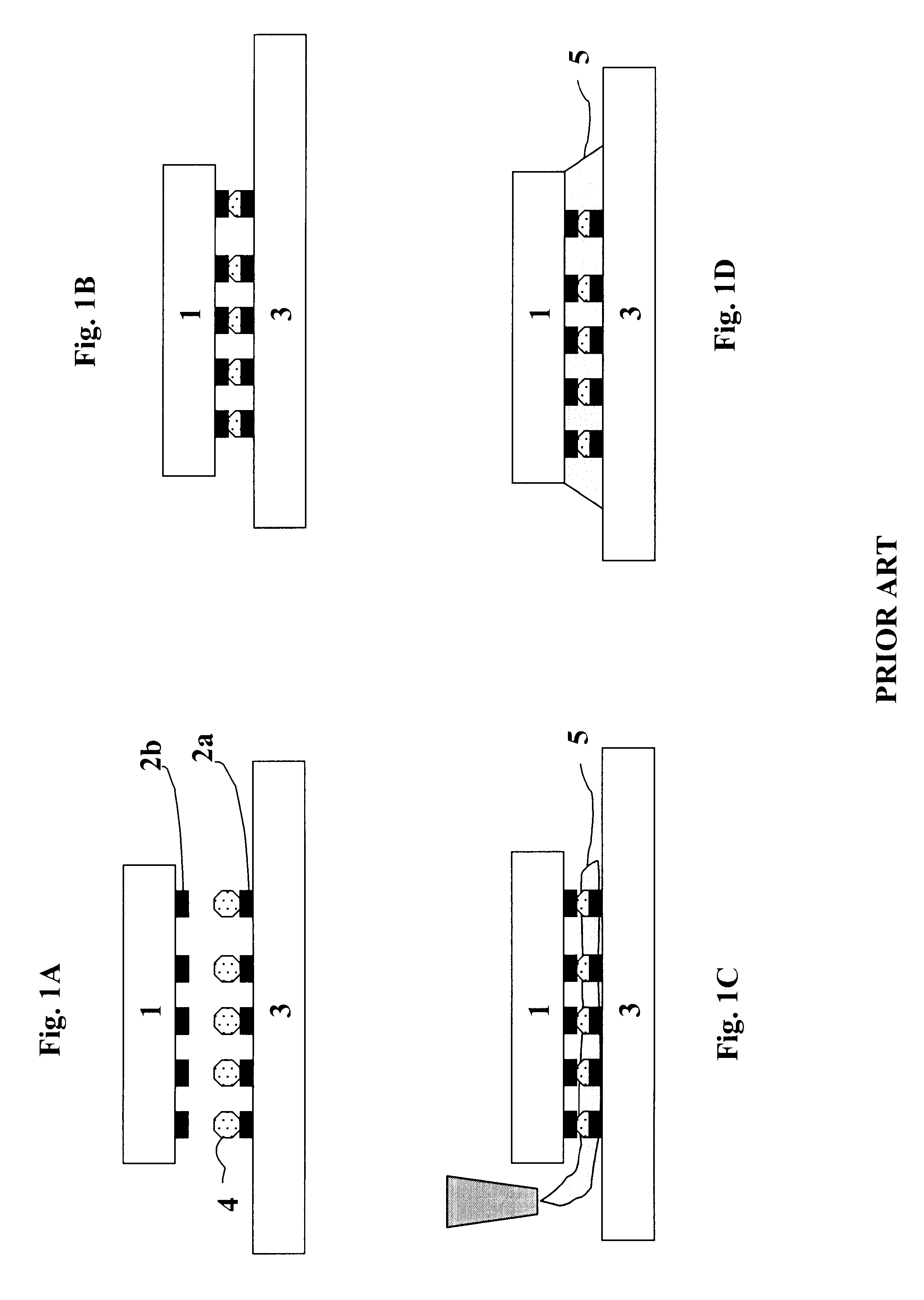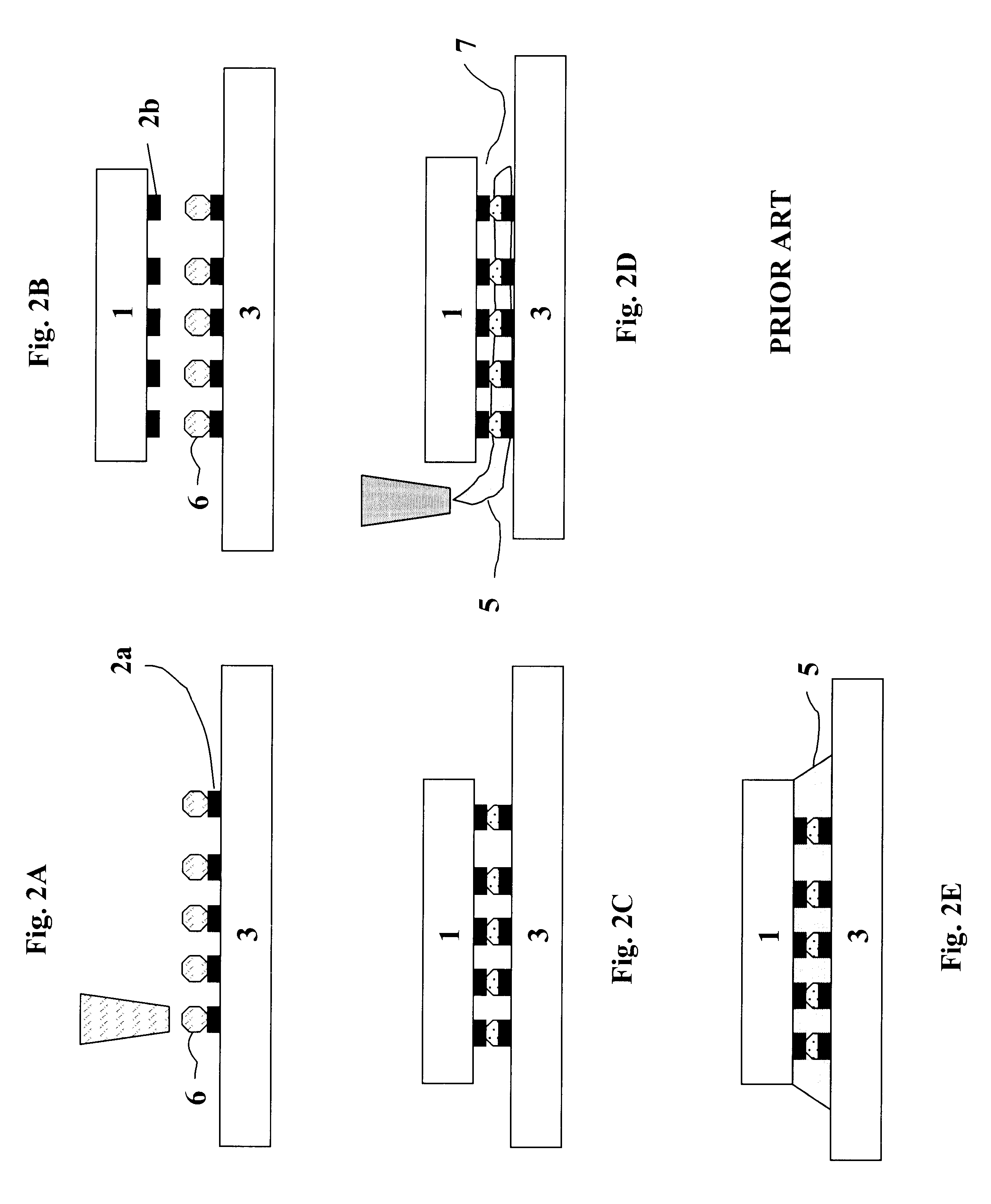Flip-chip assembly of semiconductor devices using adhesives
a technology of semiconductor devices and adhesives, applied in the direction of contact member assembly/disassembly, electrical apparatus, solid-state devices, etc., can solve the problems of inconvenient assembly process, inconvenient use, and inability to meet the requirements of the assembly process, so as to achieve a simple, reliable and cost-effective assembly process.
- Summary
- Abstract
- Description
- Claims
- Application Information
AI Technical Summary
Benefits of technology
Problems solved by technology
Method used
Image
Examples
first embodiment
In the present invention, illustrated in FIGS. 4A-4F, an assembly process for flip-chip mounting of devices to a substrate is disclosed, comprising the steps of:
Step I1 (FIG. 4A): providing a substrate 3 comprising a plurality of metal areas called bonding or contact pads 2a and the chip 1, equally comprising a plurality of metal areas (2b) corresponding to said bonding pads (2a) on the substrate. The component's bonding pads (2b) can be chip bumps or pins.
Step I2 (FIG. 4B): Application of the ICA 6 on bonding pads 2a present on the substrate 3.
Step I3: Drying of the ICA.
Step I4 (FIG. 4C: cross section, FIG. 4D: top view): Application of NCA underfill material 5 to the substrate 3 in between the bonding pads 2a.
Step I5 (FIG. 4E): Alignment and placement of the component 1.
Step I6 (FIG. 4F): Execution of a thermocompression step to create electrical contacts between the component 1 and the substrate 3.
First the materials used in the above sequence are outlined; thereafter, the altern...
second embodiment
In the present invention, step I5, in which the component is positioned with respect to the substrate and placed on top of the adhesives, is done on a first tool. Again the component will be pushed to the adhesives present on the substrate, until the underfill material substantially fills in a uniform way the gap between both parts, not filled by the ICA bumps. The adherence of the component to the adhesives is such that the assembly can be transported to a second tool while maintaining the position of the component with respect to the substrate. Thanks to the presence of both the NCA and ICA adhesives, possible mechanical stress will be absorbed by both adhesives. The last step, step I6, in which the final electrical and mechanical connections are established is executed on a second tool according to the previous embodiment of the invention. By allowing the placement of the chip and the thermocompression cycle to be executed on two different machines, the throughput of an assembly ...
third embodiment
In the present invention, the curing of the adhesives, thereby establishing an electrical and mechanical connection, is done by ultraviolet (UV) light. This is illustrated in FIGS. 5A-5C. Instead of providing the energy necessary to form the cross links during the polymerisation of the adhesives by the thermode in contact with the component or to the substrate in contact with the supporting table, this energy can be provided for by light, preferably UV-light 10. If a transparent substrate 3, such as e.g. glass or plastic is used, which allows the passage of, e.g. UV radiation without absorbing the light, light curing can be used instead of thermal curing. A first requirement is that the adhesives must be UV curable. If the component is not transparent to the UV radiation, the curing can be executed from the backside of the assembly, i.e. the surface of the substrate opposite the surface connected to the component by applying heat to this surface. For example the table on which the s...
PUM
 Login to View More
Login to View More Abstract
Description
Claims
Application Information
 Login to View More
Login to View More - R&D
- Intellectual Property
- Life Sciences
- Materials
- Tech Scout
- Unparalleled Data Quality
- Higher Quality Content
- 60% Fewer Hallucinations
Browse by: Latest US Patents, China's latest patents, Technical Efficacy Thesaurus, Application Domain, Technology Topic, Popular Technical Reports.
© 2025 PatSnap. All rights reserved.Legal|Privacy policy|Modern Slavery Act Transparency Statement|Sitemap|About US| Contact US: help@patsnap.com



